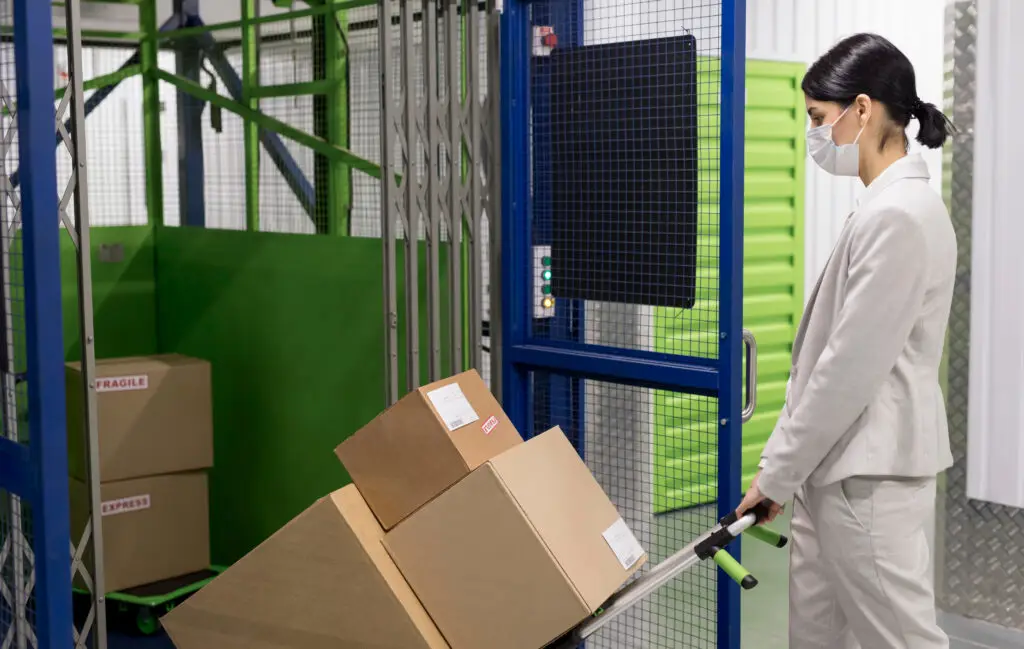On November 18th, Smithfield Foods (one of the largest food-processing companies in the U.S.) and FourKites (a well-known supply chain visibility solution) co-organized a webinar titled “The real ROI of Supply Chain Visibility.” We admired their structured way of explaining the benefits and got inspired by their interesting discussion. However, we felt that an important benefit of visibility could be highlighted more explicitly: the benefit of monitoring temperature-sensitive cargo.
To elaborate on the importance of temperature monitoring for perishable cargo, we will look at the operations of one of our partners: Foodcareplus. They are a primary freight forwarder in Antwerp, specialized in the transport of food and perishables.
Shipping chocolate
The entire world loves chocolate (especially Belgian chocolate), but it’s a sensitive product to ship and, therefore, a great example to demonstrate the benefit of supply chain visibility.
There are a handful of risks during the shipping process that could greatly impact the quality of this product. First of all, the melting point of chocolate is low. Already at 21oC (70oF), it can deteriorate completely. Secondly, the challenge is not only to avoid the melting point but also to avoid temperature fluctuations as they can cause sugar bloom and fat bloom. That is why humidity and ventilation play an important role in the quality of the product.
Next to being a delicate product, chocolate is also expensive. The total value of a full container with chocolate products can easily reach $100k.
Many freight forwarders dare to take the risk of shipping chocolate over long distances, but most of them lack experience or the right tools to ensure quality. Meanwhile, Foodcareplus feels comfortable with these shipments. They minimize the risk by having end-to-end visibility on the cold chain, allowing them to monitor circumstances closely and intervene if things go wrong.
Let’s view a recent shipment of chocolate that needed to go across the globe. The product was shipped from Belgium’s cold autumn climate through the tropical Caribbean to the summer temperatures of New Zealand.

In this 2-month journey monitored by Foodcareplus, a couple of interesting events occurred.

As the graph shows, the reefer container was set to keep the cargo below 16oC (61oF). Unfortunately, there was a temperature rise of over 20oC (68oF) a few moments after the vessel left Balboa, Panama’s port. It lasted 24 hours before returning to normal. Five days later, there was a second spike for 36 hours while traveling in the South Pacific Ocean.
For lesser fragile goods, these surges in temperature would not cause any panic. However, when shipping chocolate, these spikes could be disastrous. As a result, Foodcareplus immediately engaged their quality assurance team and contacted the shipping line to get a status update on the quality of the goods.
Luckily, the product was intact.
Being able to take quick action during such occurrences is crucial. Damages to the cargo not only start the cumbersome claims process but also have a bad impact on the business relationship no matter who eventually is responsible for it.
What is the ROI?
There is value in being able to engage your team to be reassured of the quality of the product and to show all logistics partners that you’re on top of the situation.
Even more valuable are the insights gained from such shipments. The trail of the temperature, locations, and all container handling events reveal a lot of information about the efficiency of certain terminals, the reliability of shipping lines, and the risks on certain shipping lanes.
To conclude, we want to emphasize that having visibility on the supply chain is crucial as it helps you solve problems quickly. Even more so, it helps you gain invaluable insights for future optimization of the operations. Being able to make strategic shipping decisions based on data is the next step in logistics innovation.
Do you want to learn how Dockflow can help you ship smarter?
Feel free to book a quick call with us!
Sources
Unlocking the Real ROI of Supply Chain Visibility with Smithfield Foods [FourKites Webinar]
Transport Information Service – Chocolate
If you want to learn more, take a look at our guide to reduce cargo damage and download our list of tools to prevent cargo damage losses.






